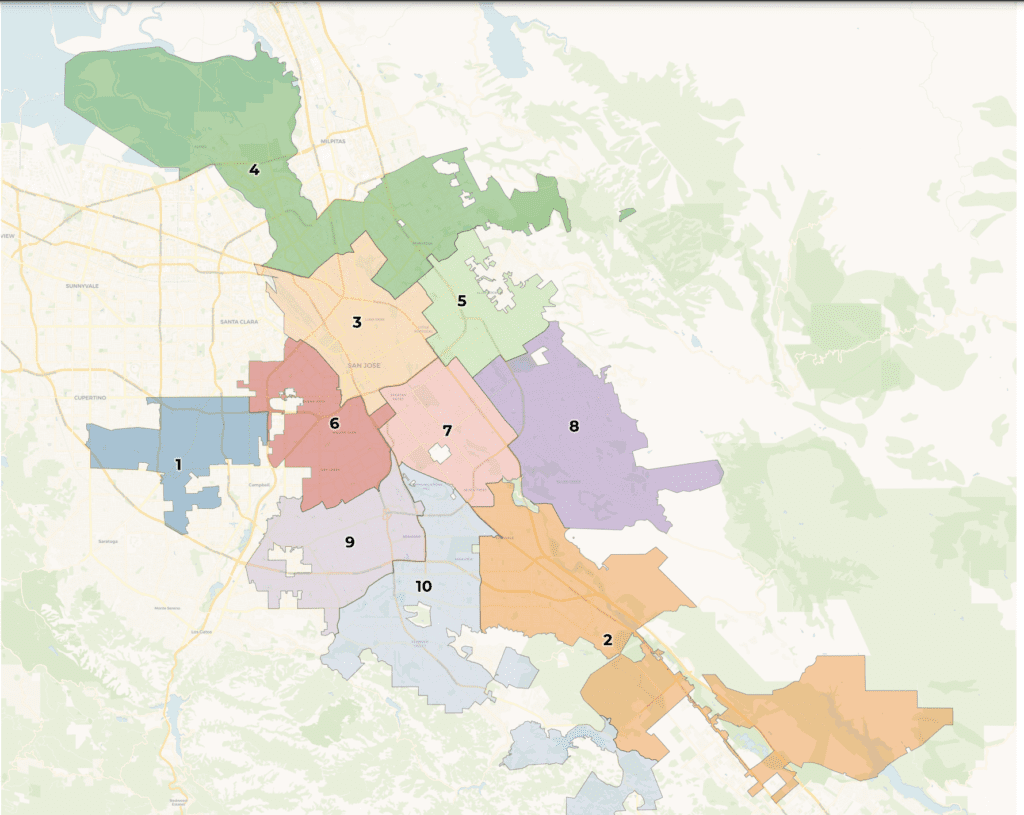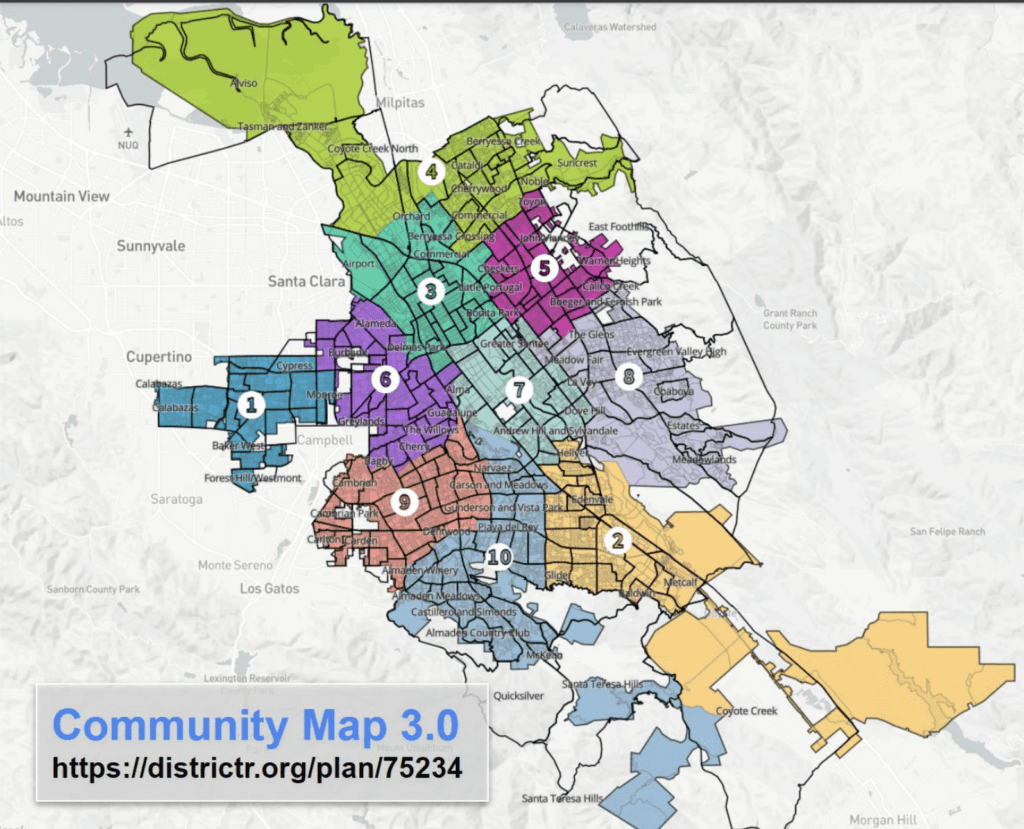San Jose will soon be divided in a new way following a city commission vote Wednesday for new council districts.
The San Jose Redistricting Commission is recommending three maps to redraw the city’s political boundaries, pushing months of heated debate about which neighborhoods belong in which districts to the City Council.
The 11-member commission chose to move forward all maps up for consideration: the “Commission Map,” drawn with the help of a city consultant; the “Community Map” presented by a group of District 3 residents including Richard Ajluni, Sonya Lu and Cheryl Lubow; and the “Unity Map” commissioned by labor-led coalition Silicon Valley Rising Action.
The commission unanimously recommended the Commission Map. It supported the Community Map with a vote of 9-2, with Commissioners Enedina Cardenas and Lenka Wright dissenting. The Unity Map split the commission with a 6-5 vote. Commissioners Sylvia Alvarez, Dee Barragan, Andrew Ditlevsen, B.J. Fadem and Lenka Wright did not recommend the map.
The maps still need to go to the San Jose City Council for final selection at a future date.
Four Latino-heavy neighborhoods were a point of contention among commissioners, with the group ultimately recommending keeping them in one district with a 9-2 vote, with Cardenas and Ditlevsen voting no.
“Communities like Guadalupe-Washington, Goodyear Mastic, Tamien and Spartan Keyes are dealing with gentrification now,” said Commissioner Fred Buzo.

The Commission Map is shaped by public comment and the city’s consultant, Redistricting Partners. The commission and the consultant have made efforts to keep many existing neighborhoods in their current districts, such as those in Districts 3 and 6, at the request of some commissioners.
The Community Map aims to keep communities of interest in District 3 together, such as Naglee Park and Japantown, and mostly shapes its districts through boundaries such as railroads and nature.

The Unity Map seeks to maximize Latino, minority and LGBTQ+ representation by keeping majority-minority neighborhoods together and undoing historically redlined regions. Its supporters say the most important part of drafting districts is to ensure no minority neighborhoods will be split, which they say will lead to voter suppression.
“Anybody who doesn’t understand that San Jose has a history of redlining needs to read a couple of books that have been on the subject,” said resident Jonathan Karpf in support of the Unity Map. “The (Commission) and Community maps maintain those districts.”
The map caused division among both residents and commissioners. Some raised concerns that the map strayed too far from the commission’s mandate to draw lines without considering neighborhood demographics. Commissioners agreed with some residents that the map split some long-standing neighborhoods.

Redistricting requires redrawing political districts every decade to account for population changes according to data from the U.S. Census Bureau. The city’s Redistricting Commission is tasked with breaking up the city into 10 council districts of roughly 100,000 people each.
Maps must take “communities of interest” into account when drawing districts, such as historic neighborhoods, ethnic enclaves and small business corridors. Historically, a lack of transparency and backroom negotiations pose threats to district representation in cities throughout the state.
Residents who support the Community Map say it keeps the most neighborhoods together. Those in favor of the Unity Map say that’s the problem: keeping current neighborhoods together would continue to suppress redlined areas.
“I’ve seen neighborhood communities work in unison for years,” resident Debra Spencer said. “I’m concerned of the current trend of outside activist groups who have no investment in our lives and families other than to change it based on their ideological view of how San Jose should be rather than what’s best for our families.”
Accusations of voter suppression, diluting votes and breaking up historic neighborhoods are just some of the complaints leveled at different maps throughout the redistricting process.
The same coalition has also presented a map to the Santa Clara County Redistricting Commission in the county’s separate redistricting process.
Supporters of the Unity Map believe other maps will reduce the voice of Latino residents in downtown by as much as 7% and reduce the voting power of Black, Latino and Asian neighborhoods across the city’s most diverse areas by 2%.
“I understand that when some people rise, people get spooked,” said resident Misrayn Mendoza. “Don’t worry, be happy. It’s part of evolution.”
In past meetings, residents have complained that some draft maps unfairly split cultural and community centers. Last month, residents in Japantown and Naglee Park raised concerns that they could be drawn out of downtown’s district, where they have been for decades, into the city’s eastern districts.
“I think we’ve done everything we can do to get rid of as many issues as we can,” said Commissioner Ramon Martinez.
Contact Lloyd Alaban at [email protected] or follow @lloydalaban on Twitter.



Leave a Reply
You must be logged in to post a comment.